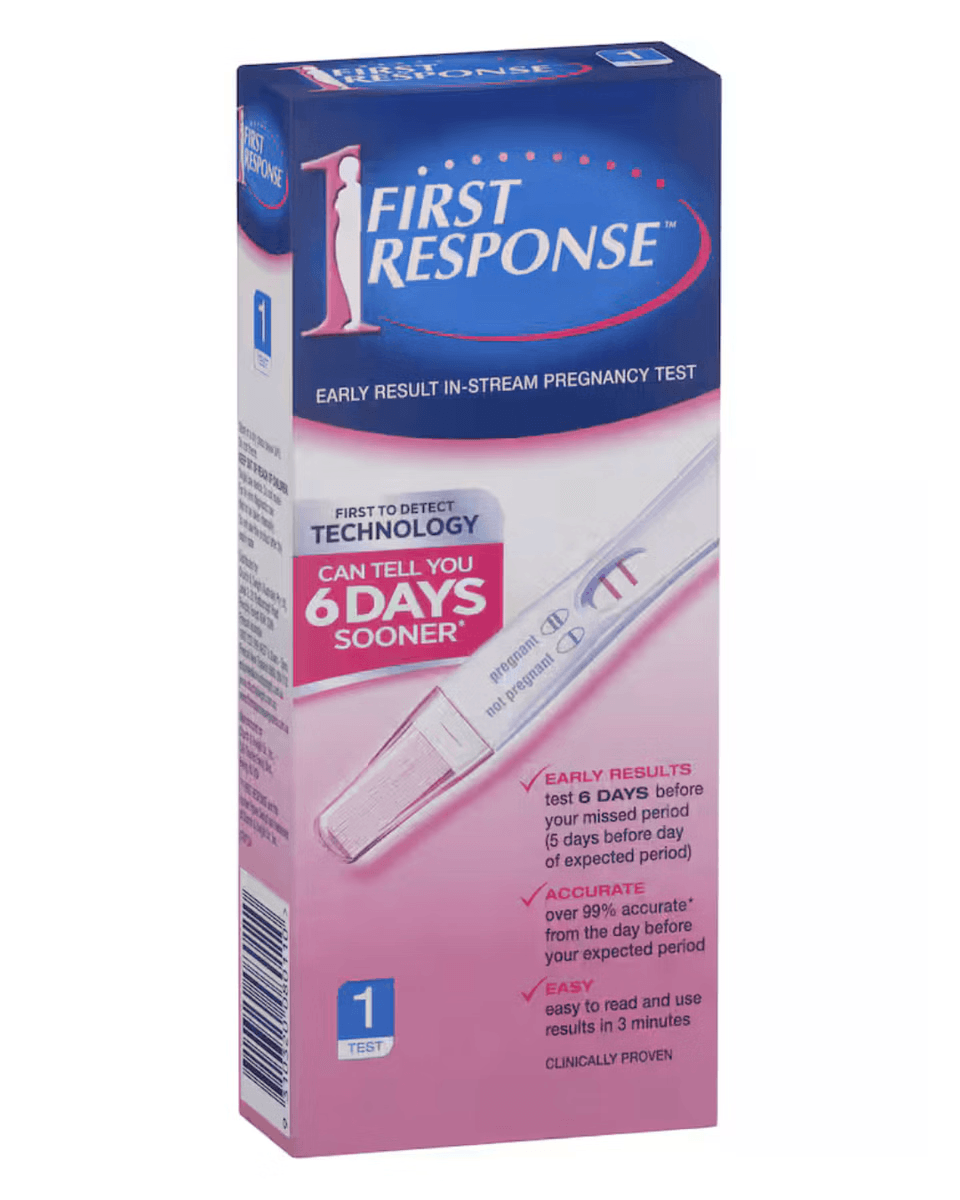Pregnancy Tests
If you suspect you might be pregnant, a home pregnancy test is a convenient and private way to test if you are pregnant. It allows you to take the test in the comfort of your own home without having to visit a doctor's office or laboratory.
These tests work by detecting a hormone called human chorionic gonadotropin (hCG) in your urine. This hormone is produced by your body in the placenta during pregnancy and released into the urine.
Human Chorionic Hormone (hCG) is sometimes called the pregnancy hormone because it plays a key role in supporting pregnancy. It is detectable in the blood and the urine about 10 to 11 days after conception.
When you pee on the test strip, the urine reacts with chemicals that detect hCG. If it is present, the test shows a positive pregnancy result, usually with a visible line or symbol on the test window.
These tests can often show if you are pregnant from the first day of a missed period.
Some pregnancy tests can detect pregnancy before a period is due, but for a reliable result, your body needs time to increase its levels of the hormones that these tests measure. Testing before a missed period can increase the risk of a false negative result.
How to take a pregnancy test
If you’re unsure how to use a pregnancy test, here’s a step-by-step guide to help you through the process:
Choose the Right Test: Head to a pharmacy or store and select a reliable home pregnancy test kit. There are various brands available, but make sure to pick one that is easy to use and has clear instructions.
Read the Instructions: Carefully read the instructions provided with the pregnancy test kit before you begin. Each brand and test will have different procedures, so it’s important to understand the specific steps for the product you have chosen.
Apply Urine: Follow the instructions to collect a urine sample. Most tests require you to either hold the test stick in your urine stream or collect a urine sample in a clean container and then dip the stick into it for a specified amount of time.
Wait for Results: After performing the test, place it on a flat surface and wait for the designated amount of time as mentioned in the instructions. Avoid moving or disturbing the test during the waiting period.
Interpret the Results: Once the specified time has passed, check the test for results. Most tests will display the results in the form of lines, symbols, or words indicating whether you are pregnant or not pregnant. Make sure to read the results within the specified time frame mentioned in the instructions, as leaving it for too long can lead to inaccurate results.
Seek Further Advice if Necessary: If you have any doubts or concerns about the results, or if you’re unsure how to interpret them, you should seek advice from a healthcare professional. They can provide guidance and support, as well as confirm the results with additional testing if needed.
Remember to remain calm throughout the process. Taking a pregnancy test can be nerve-wracking, especially if it’s your first time. Following the test’s specific instructions carefully can help ensure accurate results.
For the most accurate results:
Test on or after the expected day of your missed period
Limit your fluid intake beforehand to avoid dilution
The test should be taken first thing in the morning as the first pee of the day has the most hormone concentration so it is easier to detect
Most at-home pregnancy tests will read positive 10 days after conception
All pregnancy tests are most accurate if you wait until after your period is due
It’s always important to remember that pregnancy tests can involve a lot of emotion and hope. Some women will be hoping for positive test – just as many will be wanting a negative result. Remember to be kind and considerate. If the customer returns, or has further questions, get the pharmacist to come out for a chat or send them to their GP.
The First Response Pregnancy Test is simple and fast to use and delivers quick results on the day of the missed period or later.
Options to sell include multi-test packs – most commonly 2 or 3 which women can use for confirmation later on if wanted – as well as a single test which is often all that is required.
Remove the stick from its wrapper and take off the cap
Hold the tip down away from your body in the urine stream for 5 seconds only or collect the urine in a cup and dip the tip in the urine for 5 secs
Replace the lid and lay the stick on a dry, flat surface facing up
You may see a pink colour moving across the result window to indicate that the test is working
Read the results at 3mins, but within 10 mins
2 pink lines : Pregnant
1 pink line : Not pregnant
A negative test means no hormone has been detected and you are probably not pregnant. Repeat in a few days if you have still not started your period.
If the period doesn’t arrive soon after a negative test it might be best to see a doctor to ensure there are no other medical.
